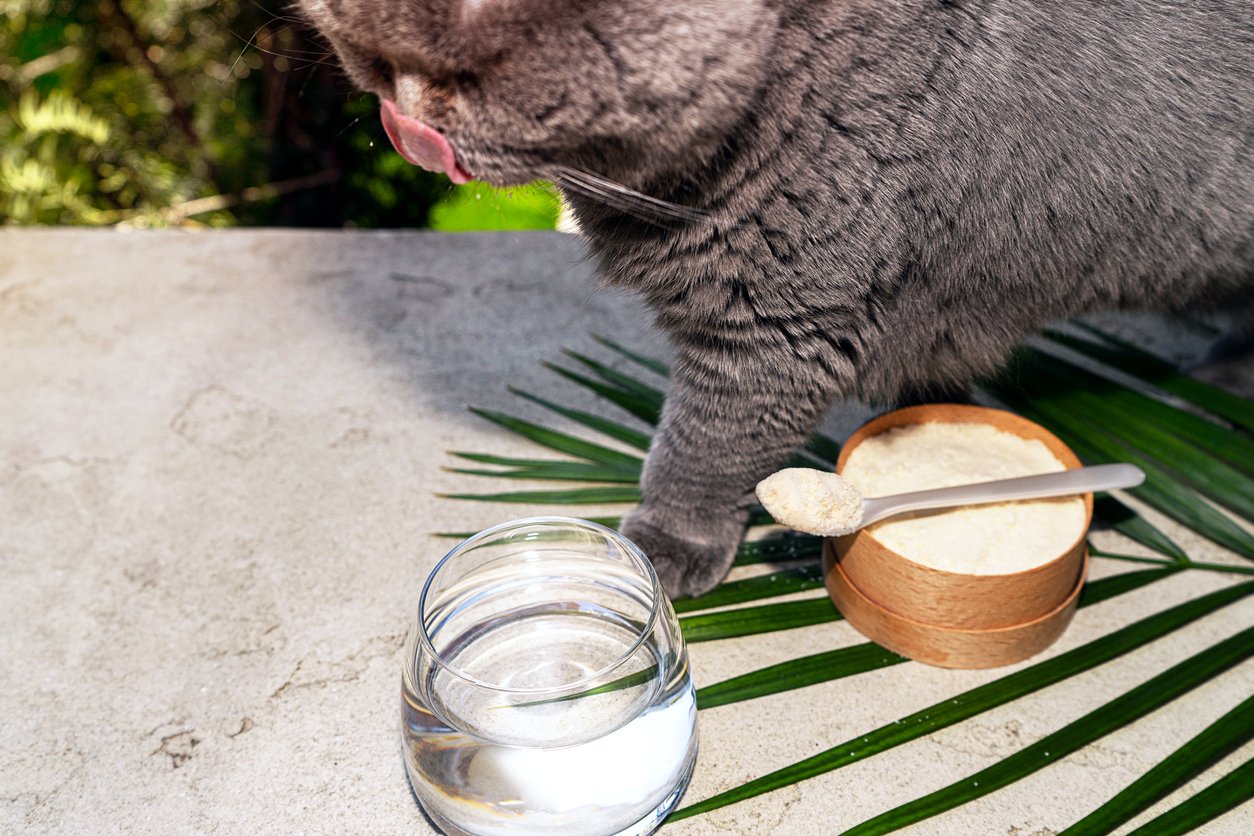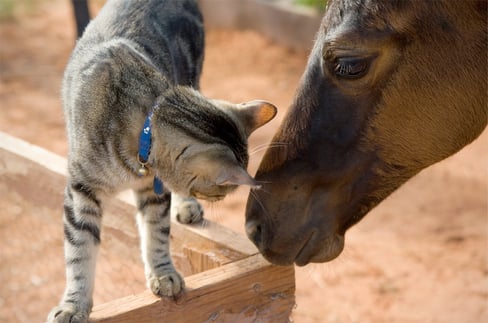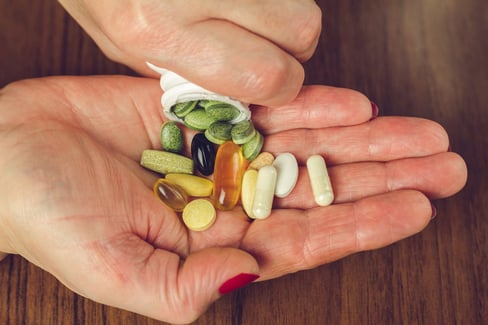Table of Contents
Ask any cat owner (including yours truly) about their pet cat, and you’ll hear things like:
Felix is a cutie. He’s smart, funny, caring, and quite the sneak. 😼🐾
And although you probably think this typically feline trickiness is charming, you need to watch out. It’s also one of your biggest concerns.
Cats are masters at hiding pain and discomfort (along with napping), meaning it could take ages for you to notice that anything is wrong with your pet.
This is particularly problematic in the case of joint health — degenerative issues like injuries, arthritis, or hip dysplasia are common, stressful, and extremely painful! So how can you help your fiercely independent felines stay agile?
With glucosamine for cats.
You’ve probably already heard about this supplement on the grapevine but aren’t quite sure what it is, how it works, or if you should add it to your cat’s diet. Don’t sweat it; this blog post will show you all this and more.
Just dive in and learn everything there’s to know!
What Is Glucosamine?
Let’s start simple and spend a couple of minutes talking about glucosamine itself. Despite its complicated-sounding name, you can rest easy. It’s not medicine, and it’s not artificial.
Glucosamine is a naturally occurring substance that plays a vital role in keeping our joints healthy.
And when we say ‘our,’ we mean it. Glucosamine is present in humans, horses, cats, dogs, mammals, and more. This means it has serious potential for helping the entire family stay flexible and active even as we gracefully turn grey!
Glucosamine Definition
Glucosamine is an essential chemical compound that the body uses as a building block for repairing and producing healthy cartilage and synovial fluid. It also provides structure to bones and other tissues.
By the way, cartilage is the rubbery tissue that cushions joints, and synovial fluid is the egg white-like liquid that reduces friction between cartilage in joints.
In short, glucosamine is a fundamental part of joint health.
The problem is that, as we age, our cartilage tends to wear thin because our bodies produce less glucosamine than in our glory days. The same thing happens to Felix (or Mr. Kitty too). And this can lead to joint pain and stiffness, especially during cold weather!
But luckily, scientists have discovered that glucosamine can be either manufactured in a lab or harvested from shellfish for use as a dietary supplement. This form of glucosamine is bioavailable (easy to absorb and use), and it has a myriad of key bone and joint benefits for pets.
Glucosamine supplements usually come in one of two types. Both are backed by scientific research, but each has its own unique advantages:
| Glucosamine Type | Unique Benefits |
| Glucosamine sulphate |
|
| Glucosamine hydrochloride |
|
These differences are the reason why you should look for supplements that use both types of glucosamine. A mix will ensure you’re providing the most effective glucosamine dose for cats.
Why Do Cats Need It?
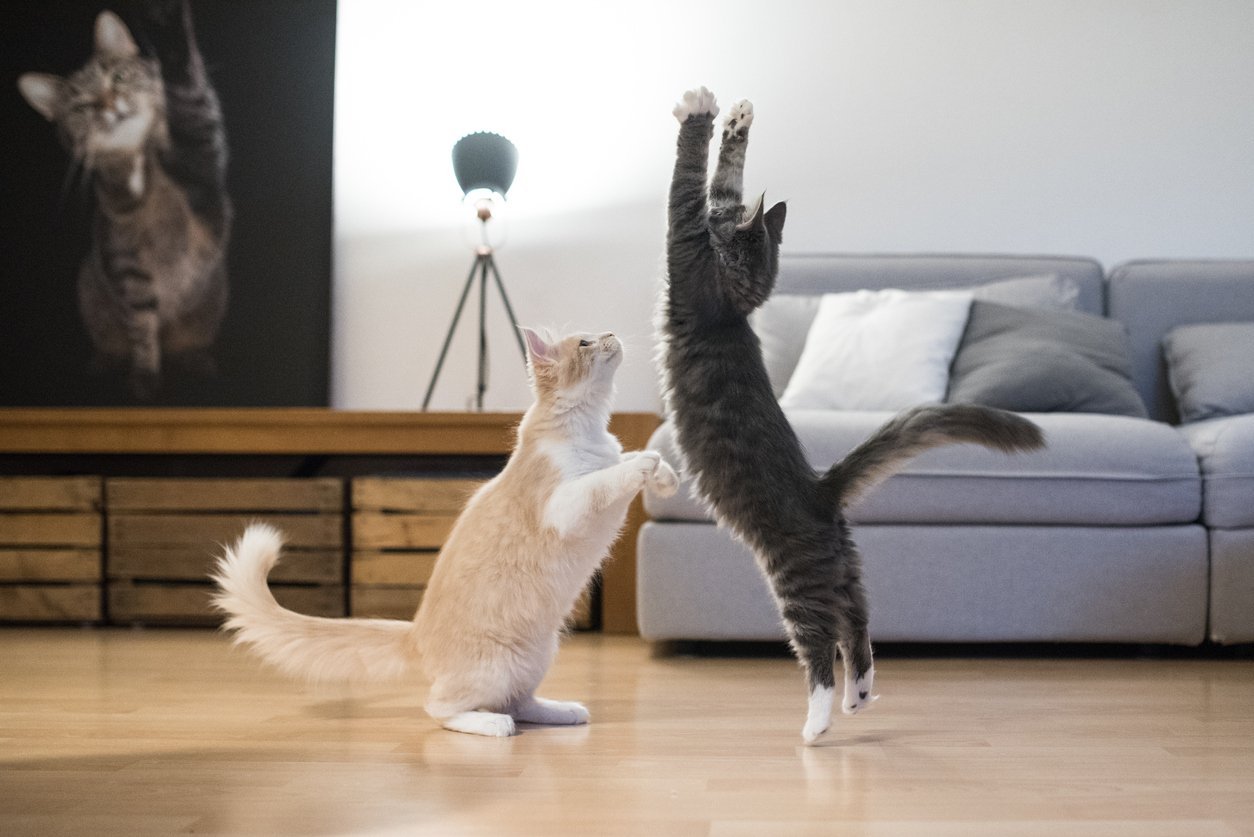
You get what glucosamine for cats is and why it’s potentially beneficial. But this question is undoubtedly still running through your mind:
“Why does MY kitty need it?”
We all love to joke that our pet cats are invincible because of their nine lives. And we’re not entirely wrong. Cats have an unbelievable ability to survive even the most unthinkable situations, like escaping a shipwreck three times during WW2!
But sadly, cats didn’t get regenerating joints, and, like their less fortunate human owners, they’re stuck with just one of each. And that’s plain old unlucky. Why?
Because cats are prone to developing musculoskeletal problems (such as arthritis) due to their fearless nature and insanely quick movements.
It’s also an issue because it’s hard to notice a cat suffering from joint pain. They’ll just hide it and become even more sedentary and nappy than before!
If you’re careful, you might notice minor signs like:
- Reduced mobility (i.e., a lack of jumping, rigid movements, or limping)
- Unusual bathroom habits
- Excessive grooming of a particular joint
- Excessive purring
- Unprecedented aggressive behaviour (like biting or scratching)
But it’s not guaranteed. All these factors point to the importance of including a glucosamine-based supplement in a cat’s diet.
Still not convinced? No problem.
Then let’s cover all the benefits of glucosamine for cats, one by one:
- Improved joint health
- Better overall health
- Pain relief from an injury, hip dysplasia, and arthritis
Impact on Joint Health
By far, the most significant impact glucosamine has on your pet is in the joint health department. And it’s no coincidence:
These supplements are developed explicitly with joints at the very top of scientists’ minds. This makes them fantastic for helping your cat build healthy cartilage and repair damaged joints.
This focus on joint heath also explains why glucosamine supplements often include other active ingredients that have similar purposes.
In particular, you should look for supplements that include chondroitin, methylsulfonylmethane (MSM), and hyaluronic acid (H.A.).
What exactly are they?:
- Chondroitin sulphate — a compound made up of glycosaminoglycans (GAGs), glucuronic acid, and galactosamine. Its primary function is to prevent deterioration in joints by neutralizing destructive enzymes, but it also provides pain relief and helps glucosamine deliver more effective results. You could say that if glucosamine is Batman, then chondroitin is Robin!
- MSM — a powerful antioxidant with two major tasks:
- Relieve pain, swelling, and inflammation
- Support muscles, tendons, ligaments, and cartilage
- Hyaluronic Acid — H.A. is another naturally occurring compound that can be found in animal cartilage and synovial fluid. Its main roles are to keep cartilage flexible and lubricate joints. More joint fluid is critical because it leads to better shock absorption and less (or no) pain.
When all of these ingredients are combined, a joint supplement can really go a long way towards keeping a cat’s joints well-functioning and pain-free.
Impact on Overall Health

It’s easy to see how joint supplements benefit a cat’s overall well-being. After all, a cat needs its joints to do practically everything that isn’t sleeping or resting! We know that doesn’t sound like much when your kitty is sleeping for up to 20 hours per day, but it’s really a matter of quality and not quantity.
Functioning joints enable your cat to do the things they love: playing, sitting on tall ledges, jumping, exploring, and hunting (even if it’s a toy mouse).
Without these fun activities, you could easily find yourself with a pretty depressed kitten. Joints also play a massive part in ensuring proper muscle health and healthy body weight.
Impact on Injuries
Cats are daring creatures. They know no fear and often put themselves into situations that would make the average person scream bloody murder.
Sugar the cat even fell out of a window on the 19th floor and survived with only minor injuries!
But, despite their incredible luck, cats don’t always get away with their crazy landings. You need to be prepared for the worst.
Common traumas include broken bones, dislocated joints, ligament sprains, and tendon strains.
The best preparation is definitely prevention, but sometimes it’s not enough. And when unfortunate injuries happen, joint supplements containing glucosamine, chondroitin, and MSM are a good idea. They help injured cats recover by promoting cartilage production and reducing levels of pain and inflammation.
Just double-check with your vet if you have any doubts or need a hand choosing the right supplement for your cat’s specific injury.
Impact on Hip Disease
Hip dysplasia is an often-overlooked disease in cats, as most pet owners principally associate it with large dogs.
However, our feline friends are also at risk, particularly if they’re a purebred cat or a member of one of the following breeds:
- Devon Rex (40% risk of developing dysplasia)
- Maine Coon (37.4% risk)
- Abyssinian (30% risk)
- Himalayan (25% risk)
- Persian (15% risk)
So what exactly is this disorder? And does glucosamine for cats help?
Hip dysplasia is a hereditary condition in which the ball and socket of the hip joint are misaligned. This results in lax ligaments, dislocated hip joints, difficulty moving, pain, and ultimately arthritis.
Joint supplements containing a cocktail of glucosamine, chondroitin, MSM, and H.A. can help your cat better cope with this disease.
They can slow down its progression, reduce pain and inflammation, and provide the right nutrients for the production of healthy cartilage, joint tissue, and synovial fluid.
Impact on Arthritis
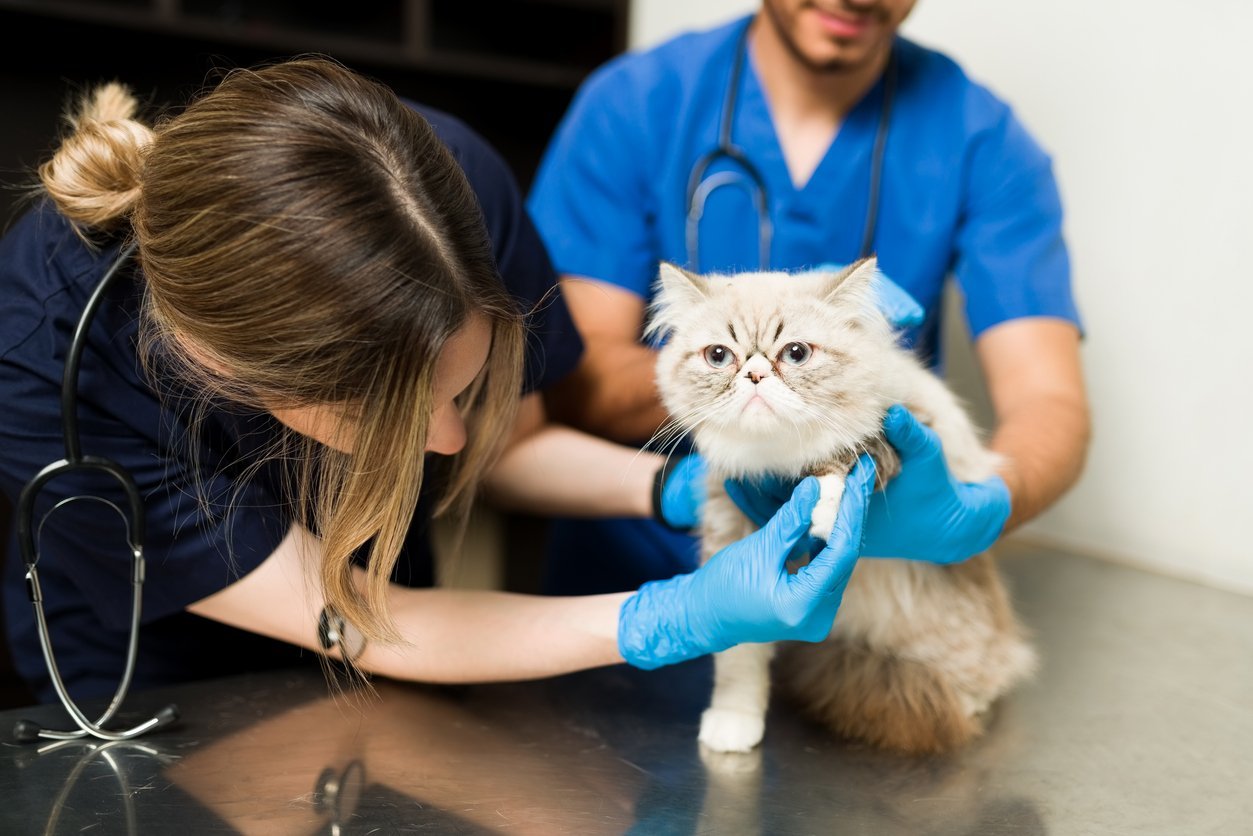
Osteoarthritis, more commonly referred to as arthritis, is a serious condition that all cat owners need to be aware of. For one simple reason:
The vast majority of cats will develop it as they age.
Arthritis is a chronic condition that’s caused by the deterioration of cartilage and underlying bone in joints. It results in pain, stiffness, and swelling. Sounds awful, right? Luckily you can help!
Providing your cat with quality glucosamine-based supplements is indicated both for treating arthritis and preventively delaying its onset. The active ingredients will help limit the loss of cartilage, minimize pain and inflammations, and improve your cat’s mobility — excellent for making the most of living with this incurable disease.
When to Use Glucosamine for Cats
At this point, we’ve finished covering the benefits of glucosamine for cats, but our blog post isn’t done yet!
Stick around, and we’ll cover a list of seven common scenarios where it’s highly recommended to integrate this supplement into your pet’s diet.
Let’s kick our list off with:
1. Your Cat Is Aging (or Already Old)
By this point in the article, this one should be pretty obvious — an ageing cat needs help keeping its joints healthy.
Many years of intense acrobatics take their toll. 90% of cats over 12 years old have evidence of arthritis in their joints.
And since your pet is quite stoic, they’re unlikely to complain or show any major symptoms. This means that you should act preventively and give your ageing cat (from around 6 years old) a quality supplement with glucosamine, chondroitin, and MSM.
Something like TRI-ACTA For Pets would work wonders.
However, suppose your kitty is already well into his/her teens (or is displaying signs of joint pain). In that case, it’s best to look for a stronger supplement that also contains H.A. for more complete protection.
Why? Because H.A. works hard to keep your kitty’s cartilage even more flexible and their joints even more lubricated. This ultimately leads to better shock absorption and less pain.
Our TRI-ACTA H.A. For Pets is a great example of this type of product.
TRI-ACTA H.A. for Pets
Our maximum strength formula is optimally designed to accelerate the formation of cartilage, minimize inflammation, expedite the healing process, and improve joint conditions.

2. Your Cat Is Overweight or Obese
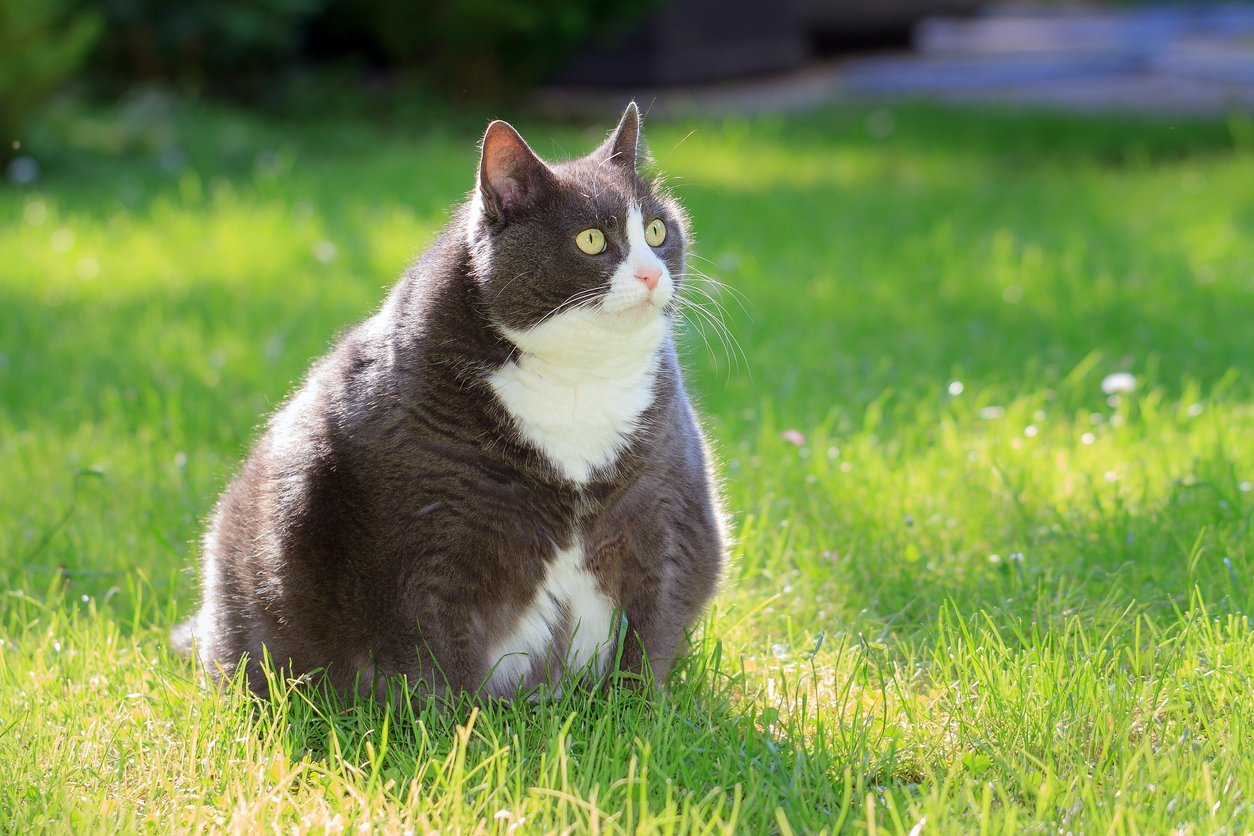
Chubby cats are adorable, we get it (I mean, just LOOK at him!)
But being overweight is a severe problem for felines, especially when you consider that a whopping 59.5% of US cats are classified as obese in the USA.
Too much weight can lead to a host of health issues, including:
- Injuries
- Arthritis
- Diabetes
- Muscle diseases
- Cancer
The best course of action is to create a weight loss and exercise plan and stick to it no matter how loud they meow.
A solid plan will help your little buddy shed a few pounds before they develop any of these potentially life-threatening disorders. Additionally, pet supplements should be used to ensure your cat gets the nutrition they need to keep their under-pressure joints in tip-top shape.
3. You Have an Outdoor Cat
Outdoor cats are famous for getting up to no good during their “nights out.”
You surely know the drill:
Your cat comes home with a couple of scratches, something stuck in their paw, or maybe even a sprained leg. You then spend the following day sorting them out or taking them to the vet. Just a typical day in the life of an outdoor cat owner.
But while you can’t prevent most outdoor risks, you can protect your little rascal’s joints by adding glucosamine for cats supplement to their diet.
Stronger, more resistant joints will result in fewer injuries as they dash through the neighbour’s yard.
As a side note, we definitely recommend adding a catio to your terrace or garden to create a safe “evening space” for your cats.
4. You Have a Daredevil Cat
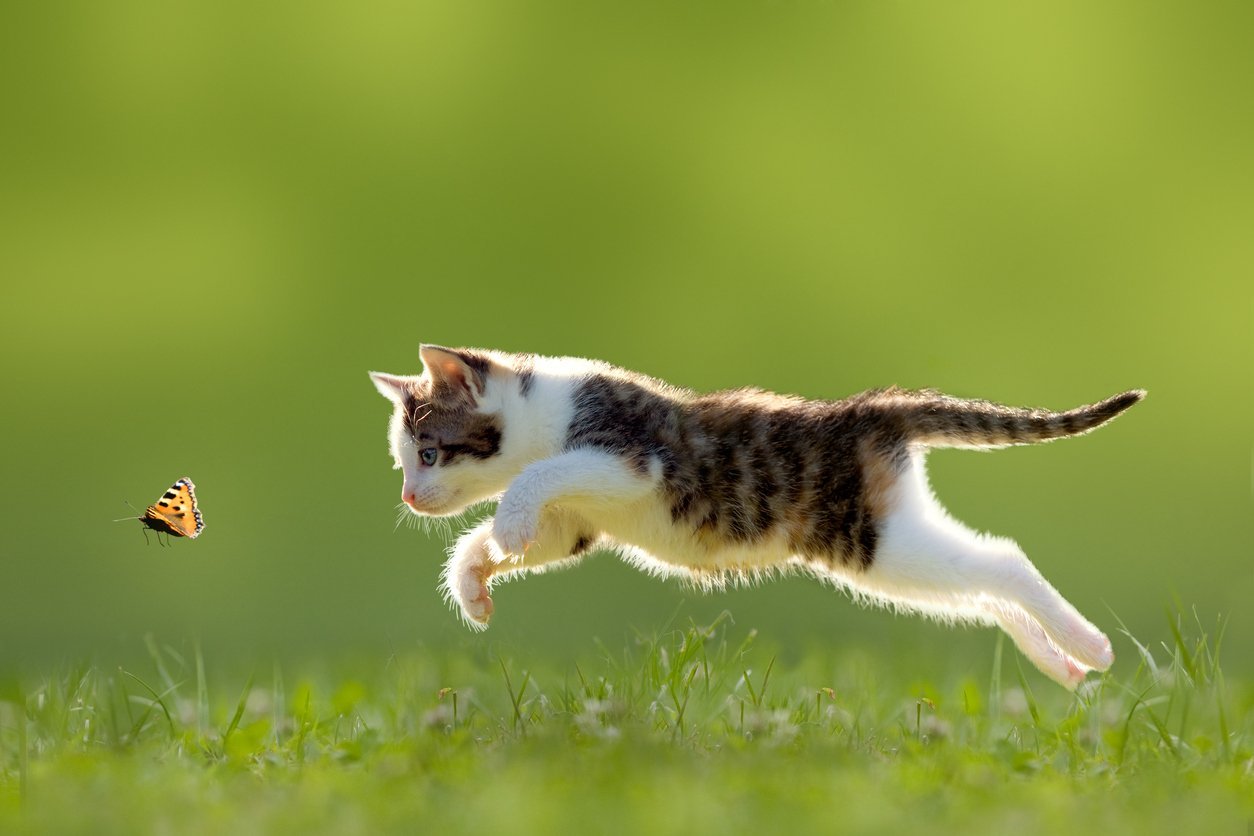
We’ve already mentioned Sugar, the kitty that survived a 19-story drop with barely any injuries. What we didn’t mention is that a lot of cats suffer from the same problem as Sugar.
It’s known as the high-rise syndrome, and it’s the tendency to jump into the unknown from very high places.
Yikes!
And since, unfortunately, cats don’t have wings or built-in parachutes, this is a high-risk pastime. Injuries, and even death, are on the cards. If your cat is one of these daredevils, alarm bells have probably been going off in your head since you started reading this section.
The best preventive actions to take are:
- Keep all your high-story windows closed, and
- Make your home and garden as “cat-safe” as possible.
But don’t underestimate the importance of dietary supplements containing glucosamine, chondroitin, and MSM.
They can treat ailments caused by unlucky falls and even prevent injuries by stimulating stable joints and hardy bones.
Speaking of injuries, this brings us to the next scenario:
5. Your Cat Is Recovering From an Injury
Fall? Accident? Fight? It happens.
Cats are thrill-seekers always ready to test their limits. But sometimes things don’t go the way they planned.

And for those times, your pet felines need:
- A good vet
- Medicines like nonsteroidal anti-inflammatory drugs (NSAIDs)
- Plenty of rest
- Glucosamine-based supplements for a speedier recovery
If you can provide these four elements, they’ll be back at trying to establish a new world order before you know it!
6. Your Cat Has (or Is Prone To) Hip Dysplasia
We’ve discussed hip dysplasia in detail. And by now, you know it’s a degenerative condition that can affect cats as well as dogs.
Our recommendation is clear for pet owners:
If you have a cat with hip dysplasia or a cat from a breed predisposed to this disorder, you should invest in high-quality joint supplements to complement their diet.
The active ingredients (glucosamine, chondroitin, MSM, H.A.) can play an important part in slowing down the disease’s development and reducing pain.
7. You Live by the Motto “Better Safe Than Sorry”
Benjamin Franklin, a pretty wise guy, once said that: “An Ounce of Prevention Is Worth a Pound of Cure.”
And how could we disagree?
Prevention, in our books, is the best strategy for keeping our beloved pets in top shape.
Plus, it’s also a good idea for us owners. It’s way cheaper and less stressful than going to the vet once our pets get sick. Supplements like Integricare TRI-ACTA that include glucosamine for cats are the no-brainer choice for everyone involved.
Your pets get the extra nutrients they need for healthy joints, and you get peace of mind knowing that you’ve done everything you can for your pets.
Glucosamine for Improved Overall Feline Health
All the points we examined today demonstrate that glucosamine for cats is a real game-changer for joint and overall health.
Supplements can help your kitty avoid (or at least better cope with) a large number of painful health complications and live a longer, happier life.
Just don’t expect supplements to do it all.
Your cats also need:
- Adequate levels of play and exercise
- A balanced diet (rich in Omega 3s)
- A safe, comfortable environment to call home
- Lots of love and companionship
Now that should do it.
Common Glucosamine for Cats FAQs
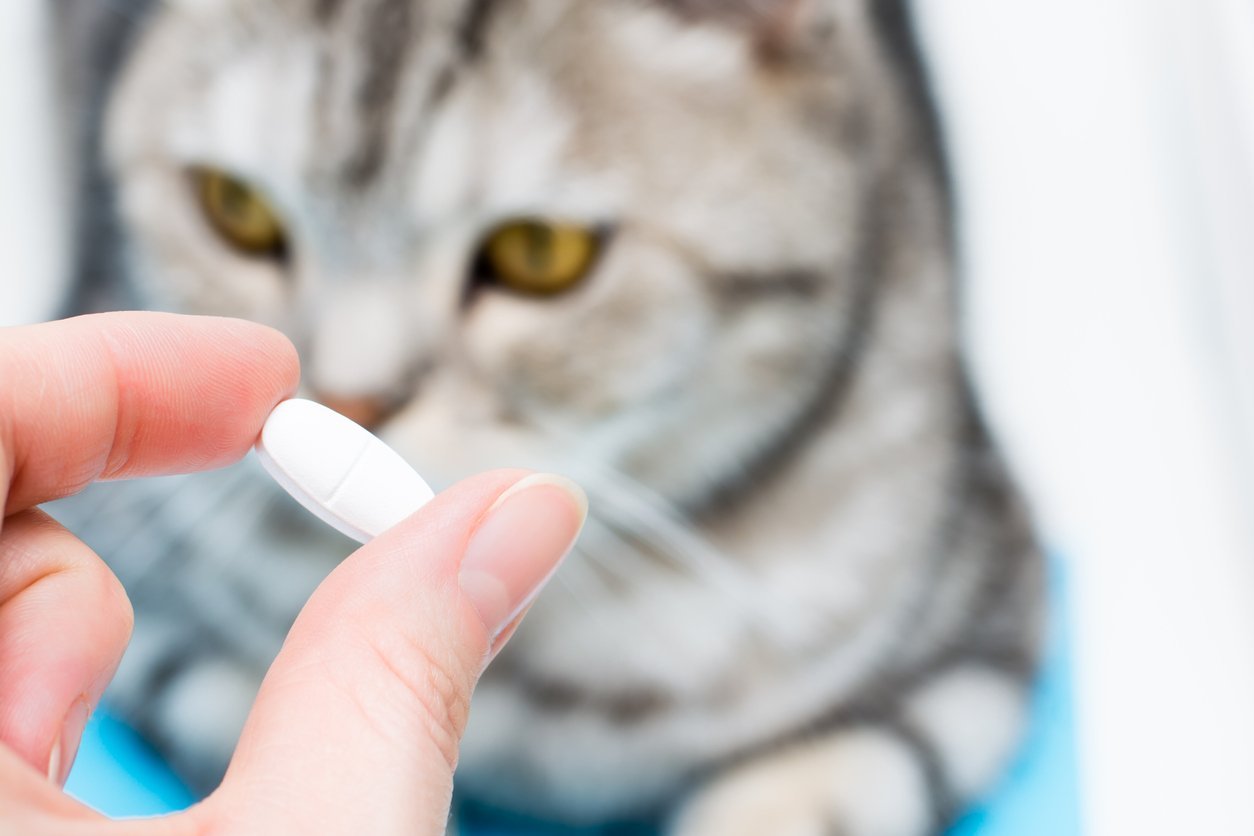
“Can I Give My Cat Glucosamine? Is It Safe?”
Yes, glucosamine is safe for cats. Just make sure to pick a supplement that’s been specifically formulated for cats — products made for humans aren’t suitable as they might contain harmful ingredients.
It’s also best to look for options that are free from fillers, made with therapeutic dosages, and approved by a respected regulatory body like Health Canada.
Our Integricare supplements tick all these boxes: learn more about them.
“How Can I Tell If My Cat Has Joint Pain?”
It won’t be easy because cats are incredibly gifted at hiding any signs of pain, weakness, or discomfort. But don’t blame them; it’s simply in their DNA.
Rather pay close attention to these considerations for joint health of aging cats:
- Mobility issues, like a stiff walk or unwillingness to jump
- Limping
- Swollen joints
- Sudden changes in bathroom or grooming habits
- Excessive purring
- Unusual aggressive behaviour
“How Much Glucosamine for Cats Should I Give My Pets? What’s the Right Glucosamine Dose for Cats?”
Roughly speaking, you should aim to give your kitty about 120 to 500 milligrams of glucosamine per day. The exact glucosamine dose for cats will depend on the supplement you pick and your veterinarian’s recommendation for your individual pet.
As an example, let’s take TRI-ACTA for Pets and show you the correct dosage. If your cat is under 10 lb (4.5 kg), you should give them 0.5 g of product per day. This contains a dose of 250 mg of glucosamine. However, if your cat is heavier than 10 lb (4.5 kg), you should up the dose to 1 g per day ( 500 mg of glucosamine).
“Can a Cat Overdose on Glucosamine?”
It’s highly improbable as glucosamine has few side effects. The only real risk of overdose is if you give your cats a huge serving or if they break into the bag. This can lead to diarrhea, nausea, or vomiting.
Please take your pet to the vet if you suspect an overdose. But if you pay close attention to your product’s recommended glucosamine dose for cats, you won’t have to deal with any of these uncomfortable issues!
“What Are the Best Joint Supplements for Cats?”
Great question. We often hear this one, along with, “aren’t pet supplements basically all the same?”
The answer is no; there’s a lot of subpar products out there. For us, the best glucosamine supplements should have the following characteristics:
- 100% active ingredients and 0% filler
- Dosages at therapeutic levels
- Pure, natural forms of glucosamine, chondroitin, MSM, and hyaluronic acid
- Both forms of glucosamine: hydrochloride and sulfate
- Approval from a significant health body
And these are precisely the standards we hold ourselves up to when manufacturing our pet products, TRI-ACTA and TRI-ACTA H.A.
If you’d like more recommendations for market-leading supplements, then don’t miss our list of the top 6 pet supplements!
Summary: Get Started With Glucosamine Supplements for Cats
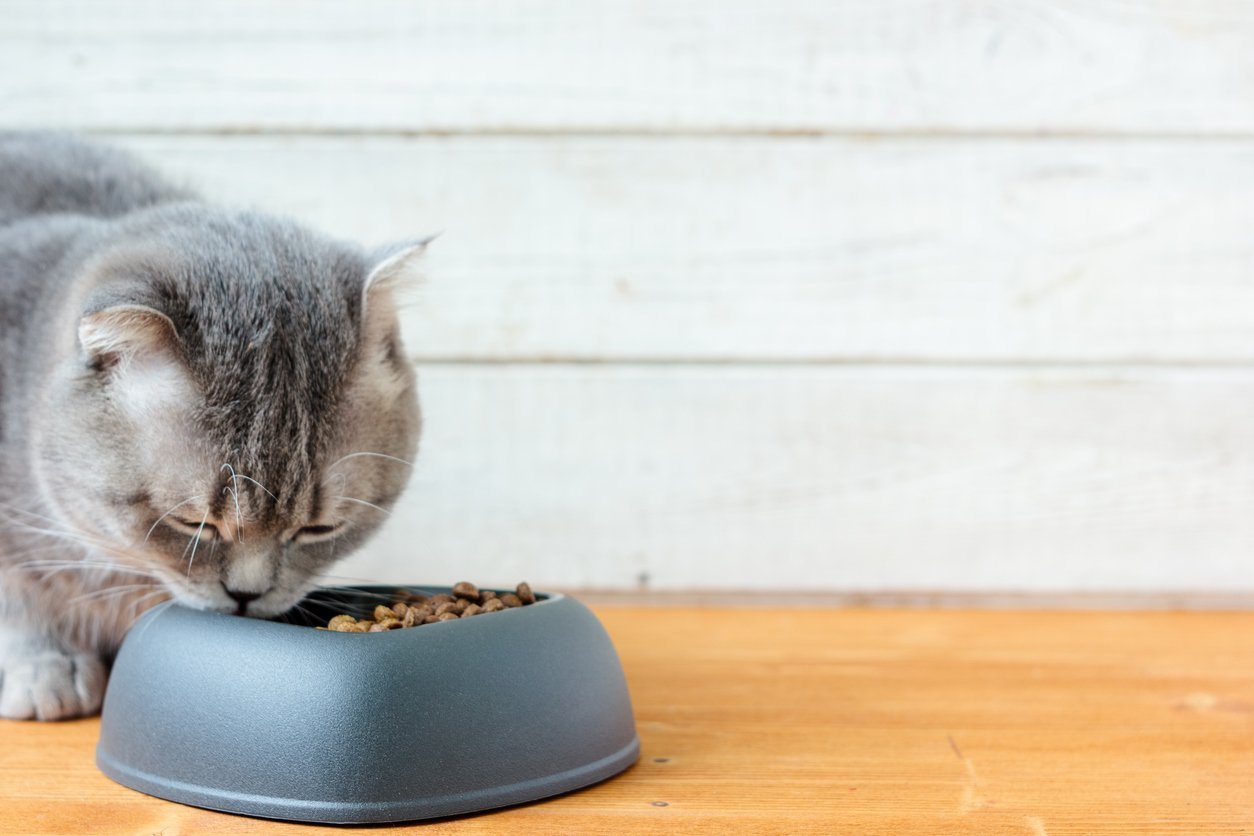
Congrats for making it to the end of this deep dive into glucosamine for cats!
You’re now well-versed in this topic, and you have more than enough knowledge to make an educated decision about glucosamine joint supplements.
Here’s a quick summary of their benefits just in case anything slipped your mind:
- Improved joint health thanks to glucosamine’s remarkable ability to promote cartilage growth
- Pain relief from injuries, hip dysplasia, and arthritis
- Better overall health and well-being
If you’re ready to think about products, we’d be honoured if you took a look at our TRI-ACTA supplements for pets.
Not sure which of our two products is right for your kitty? This table should help:
| Product | Indicated For: |
| TRI-ACTA for Pets |
|
| TRI-ACTA H.A for Pets |
|
That’s it for today, so thanks for reading!
And don’t hesitate to get in touch if you have more questions about glucosamine and how it can help your cat live a fuller life.
Newsletter Signup
Subscribe to our newsletter to receive the latest news and exclusive offers.
.jpg?height=2000&name=Cliick_Integricare-DISPLAY-REVISEDV2%20(1).jpg)
Proactive & Therapeutic Joint Supplements
When given daily, Integricare joint supplements recover bone and joint injuries faster and help prevent mobility injuries from happening in the first place.

